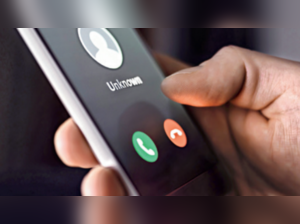Description

Disclaimer: Copyright infringement not intended.
Context
The Department of Telecom (DoT) has issued an official directive to telecom operators regarding the deactivation of USSD-based call forwarding services, effective from April 15.
Details
Background
- USSD (Unstructured Supplementary Service Data) is widely used by mobile subscribers for various functions, including checking IMEI numbers and mobile balances.
- Instances of misuse, particularly in the form of unwarranted activities, have been observed with USSD-based call forwarding services, notably the *401# service.
Reasoning and Impact
- The directive is aimed at preventing fraud and online crimes perpetrated through mobile phone services.
- By suspending USSD-based call forwarding, telecom operators can mitigate the risks associated with fraudulent activities, thereby enhancing security for subscribers.
About USSD
- USSD (Unstructured Supplementary Service Data) is a protocol used by GSM cellular telephones to communicate with the service provider's computers.
- It is a technology that allows users to interact with various services, such as mobile banking, checking account balance, prepaid mobile recharge, and accessing information, using short codes.
- These short codes initiate a session between the user's phone and the service provider's system.

How USSD Works:
- When a user dials a USSD code, a session is established between the user's device and the service provider's system.
- The service provider's system processes the request in real-time and sends back the corresponding response.
- USSD operates on a session-based model, which means it's interactive and stateful, unlike SMS.
- The working of USSD involves a series of steps that facilitate communication between a mobile device and the service provider's system.
- User Initiation: The USSD session is initiated by the user dialing a specific USSD code on their mobile device. This code typically starts with an asterisk (*) followed by a sequence of digits and ends with a hash (#) (e.g., *123#).
- Mobile Device Interaction: When the user dials the USSD code, the mobile device sends a message containing this code to the mobile network's USSD gateway.
- Routing to USSD Gateway: The mobile network's USSD gateway receives the USSD message from the user's mobile device.
- Session Establishment: The USSD gateway establishes a real-time session with the application server or platform associated with the specific USSD code dialed by the user.
- Service Processing: Upon receiving the USSD request, the application server processes the request based on the USSD code dialed by the user. The server retrieves the relevant information or performs the requested service, such as checking an account balance, initiating a mobile banking transaction, or providing interactive menu options.
- Response Generation: After processing the user's request, the application server generates a response message. This response message may include information requested by the user or options for further interaction.
- Sending Response to USSD Gateway: The application server sends the response message back to the USSD gateway through the established session.
- Delivery to User's Device: The USSD gateway forwards the response message to the user's mobile device through the mobile network.
- Display on User's Screen: The user's mobile device receives the response message from the USSD gateway and displays it on the device's screen. The user can view the information provided by the service or select options presented in the response.
- Session Termination: The USSD session remains active until the user ends it by either closing the USSD session or allowing it to time out. Once the session is terminated, the connection between the user's mobile device and the service provider's system is closed.
Applications of USSD:
- Mobile Banking: Users can check balances, transfer funds, pay bills, etc.
- Telecom Services: Checking prepaid balance, activating/deactivating services, etc.
- Information Services: Accessing weather updates, news, sports scores, etc.
- Government Services: Payment of utility bills, accessing government services, etc.

Advantages of USSD:
- Real-time Interaction: Responses are immediate as USSD sessions are live.
- Widespread Accessibility: USSD works on any GSM-enabled mobile device.
- No Internet Required: Unlike mobile apps, USSD works even on basic mobile phones without internet connectivity.
- Security: USSD transactions are encrypted, providing a secure channel for sensitive transactions.
Challenges of USSD:
- Limited Interaction: USSD menus are typically text-based and have limited interactivity compared to mobile apps or web interfaces.
- Dependency on Network: USSD relies on the network's availability, and poor network conditions can affect its usability.
- User Experience: Text-based menus might not provide the best user experience, especially for complex transactions.
|
PRACTICE QUESTION
Q. USSD continues to be a vital technology for delivering essential services to millions of users, particularly in regions where internet penetration is low or intermittent. Critically Analyse. (250 Words)
|














